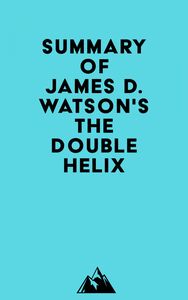
Please note: This is a companion version & not the original book.
Sample Book Insights:
#1 Zeno’s paradoxes are a series of arguments that contradict common sense and have been misunderstood for more than two and a half millennia. They raise a fundamental question about the universe: Are time and space continuous like an unbroken line, or do they come in discrete units, like a string of beads.
#2 Zeno’s paradoxes were absurd, and many thought so. They were considered embarrassments to mathematicians’ investigations of infinity and the continuum, and the Greeks abandoned such investigations.
#3 The paradox of the dichotomy is a demonstration that our understanding of motion is intricately tangled between the discrete and continuous impressions of time and space. We measure time as a duration and think of motion as continuous.
#4 Zeno of Elea, a philosopher who came to Athens from Croton in southern Italy, was reading from his famous book on philosophy. He argued that if a thing can be divided, its divided parts can also be divided and such divisions can continue indefinitely. From this, he concluded that change is not possible.Détails du livre
-
Éditeur
-
Langue
Anglais -
Date de publication
-
Thème






